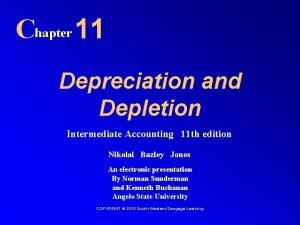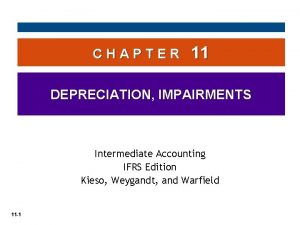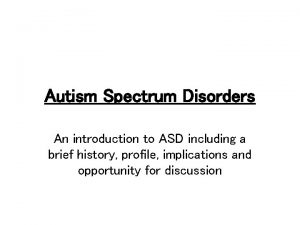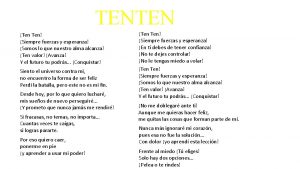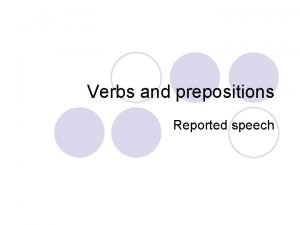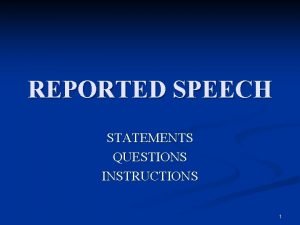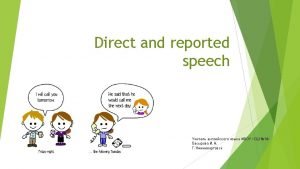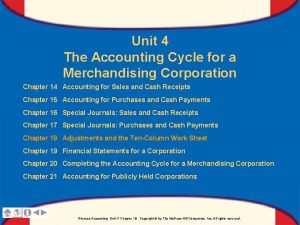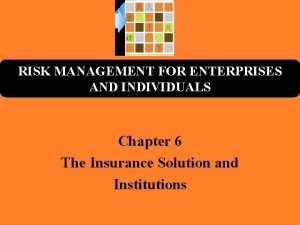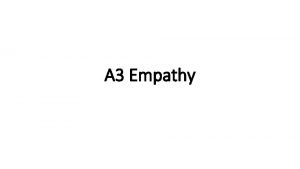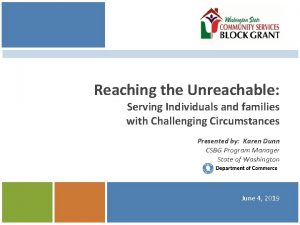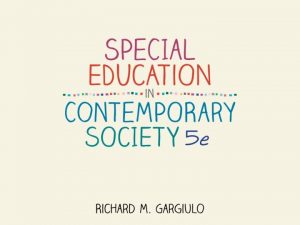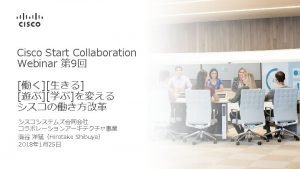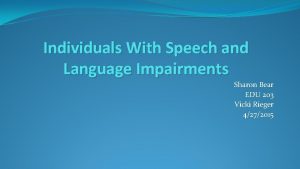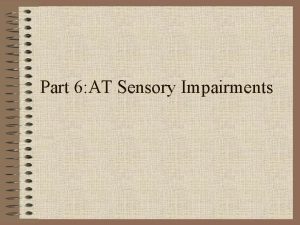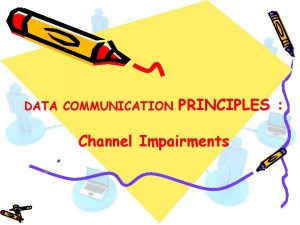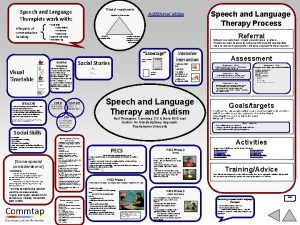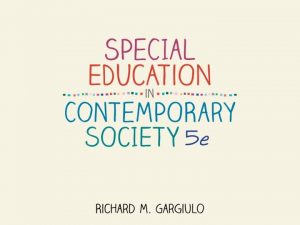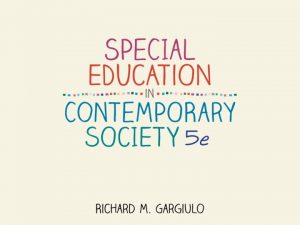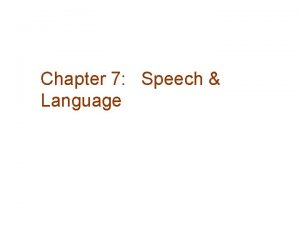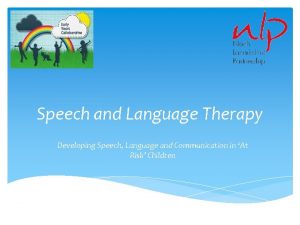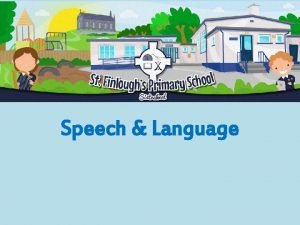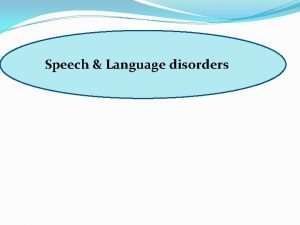Chapter Ten Individuals With Speech and Language Impairments



















- Slides: 19

Chapter Ten Individuals With Speech and Language Impairments

Nature of Speech, Language, and Communication Speech: expression of language with sounds Language: rule-based method of communication Phonology Morphology Semantics Syntax Pragmatics Communication: involves verbal and nonverbal behaviors 2

3

4

Defining Speech and Language Impairments The American Speech-Language-Hearing Association defines a communication disorder as “an impairment in the ability to receive, send, process, and comprehend concepts or verbal, nonverbal, and graphic symbols systems. A communication disorder may be evident in the processes of hearing, language, and/or speech. ” The IDEA label for students with communication difficulties is speech and language impairment and they are eligible for special education if they have “a communication disorder such as stuttering, impaired articulation, a language impairment or a voice impairment, which adversely affect a child’s educational performance. ” 5

Classifying Speech and Language Impairments Speech Disorders Articulation disorders Fluency disorders Voice disorders Language Disorders Phonological disorders Apraxia of speech Morphological disorders Semantic disorders Syntactical deficits Pragmatic difficulties Central Auditory Processing Disorders (CAPD) Difficulty processing sounds 6

Historical Perspectives Historical reactions toward individuals with disabilities: Rejection Objects of pity A rewarding sense of humor 7

Prevalence of Speech and Language Impairments High incidence disability § Often occurs with other disabilities § 20% of children receiving special education receive services for speech and language disorders § Preschoolers with speech and language disorders represent half of all preschoolers receiving special education § 8

Etiology of Speech and Language Impairments §Functional and organic Etiologies o. Functional etiologies have no obvious physical foundations o. Organic contributions linked to a physiological defect §Impairments may be congenital, developmental, or acquired §Aphasia (a loss or impairment of language functions) §Cleft lip or cleft palate (a structural congenital abnormality) 9

Prevention of Speech and Language Impairments Children typically develop language within acceptable limits § Language is learned in social contexts § Provide early language experiences to infants and young children § Genetic testing may be warranted in some situations § 10

Characteristics of Speech and Language Impairments Expressive Language May experience difficulties with: Limited vocabulary Incorrect grammar or syntax Excessive repetition of information Difficulty formulating questions Receptive Language May experience difficulties with: Following oral directions Understanding humor or figurative language Comprehending complex sentences Responding to questions appropriately 11

Assessing Speech and Language Impairments Formal and informal measures case histories, family interviews, health assessments, observations, developmental information, family dynamics, speech and language assessments Professionals teachers, speech-language pathologists, audiologists, neurologists, physicians Watch this video to learn more about a career as a Speech-Language Pathologist 12

13

Services for Young Children with Speech and Language Impairments Early identification importance § Early identification procedures § Services available from birth to school age § Interactions with typically developing peers § 14

Adolescents and Adults with Speech and Language Impairments Communication disorders may compound adolescent insecurities § Transition planning § 15

Family Issues Speech-language pathologists include families in the assessment and planning process § Speech-language pathologists provide suggestions to families to assist them in helping their children with speech or language impairments § 16

Issues of Diversity Large numbers of pupils do not speak standard American English as their first language These students are sometimes described as limited English proficient or English language learners A lack of reliable and valid tests make it difficult to assess speech and language impairments in children from culturally and linguistically diverse backgrounds. 17

Technology and Individuals with Speech and Language Impairments § Augmentative or alternative communication (AAC) o AAC devices may be low-tech or high-tech. These devices are often customized to meet the unique needs of the user. This video explores the use of assistive technology to use the internet 18

Trends, Issues, and Controversies Early intervention § Medical innovations § Cultural and linguistic diversity § Controversies regarding etiologies of speech and language disorders § 19
 Chapter 11 depreciation
Chapter 11 depreciation Component depreciation
Component depreciation Chapter 11 intermediate accounting
Chapter 11 intermediate accounting Triad of impairments
Triad of impairments Which of the following is a modifier of human acts?
Which of the following is a modifier of human acts? It's six twenty
It's six twenty Ten ten siempre fuerzas y esperanza
Ten ten siempre fuerzas y esperanza Ten ten program
Ten ten program Match the tenses in direct and reported speech
Match the tenses in direct and reported speech Pure speech vs symbolic speech
Pure speech vs symbolic speech Renu said i am hungry reporting verb
Renu said i am hungry reporting verb Indirect speech simple past
Indirect speech simple past Exclamation reported speech
Exclamation reported speech Reported speech form
Reported speech form Joe said please come to my party
Joe said please come to my party Journalizing adjusting entries
Journalizing adjusting entries Risk management for enterprises and individuals
Risk management for enterprises and individuals Empathy and establishing trust with individuals
Empathy and establishing trust with individuals Serving individuals and families
Serving individuals and families Serving individuals and families
Serving individuals and families
